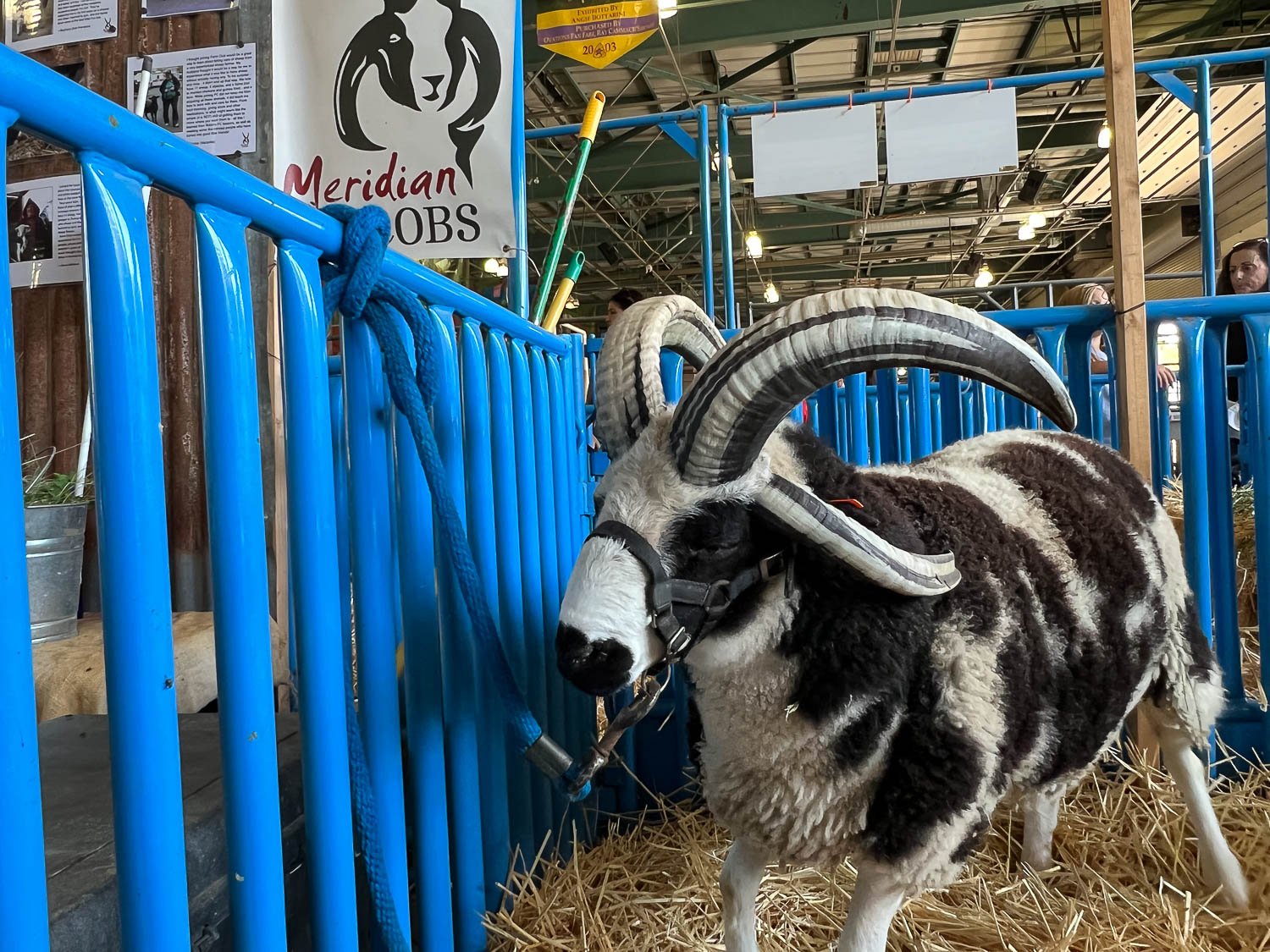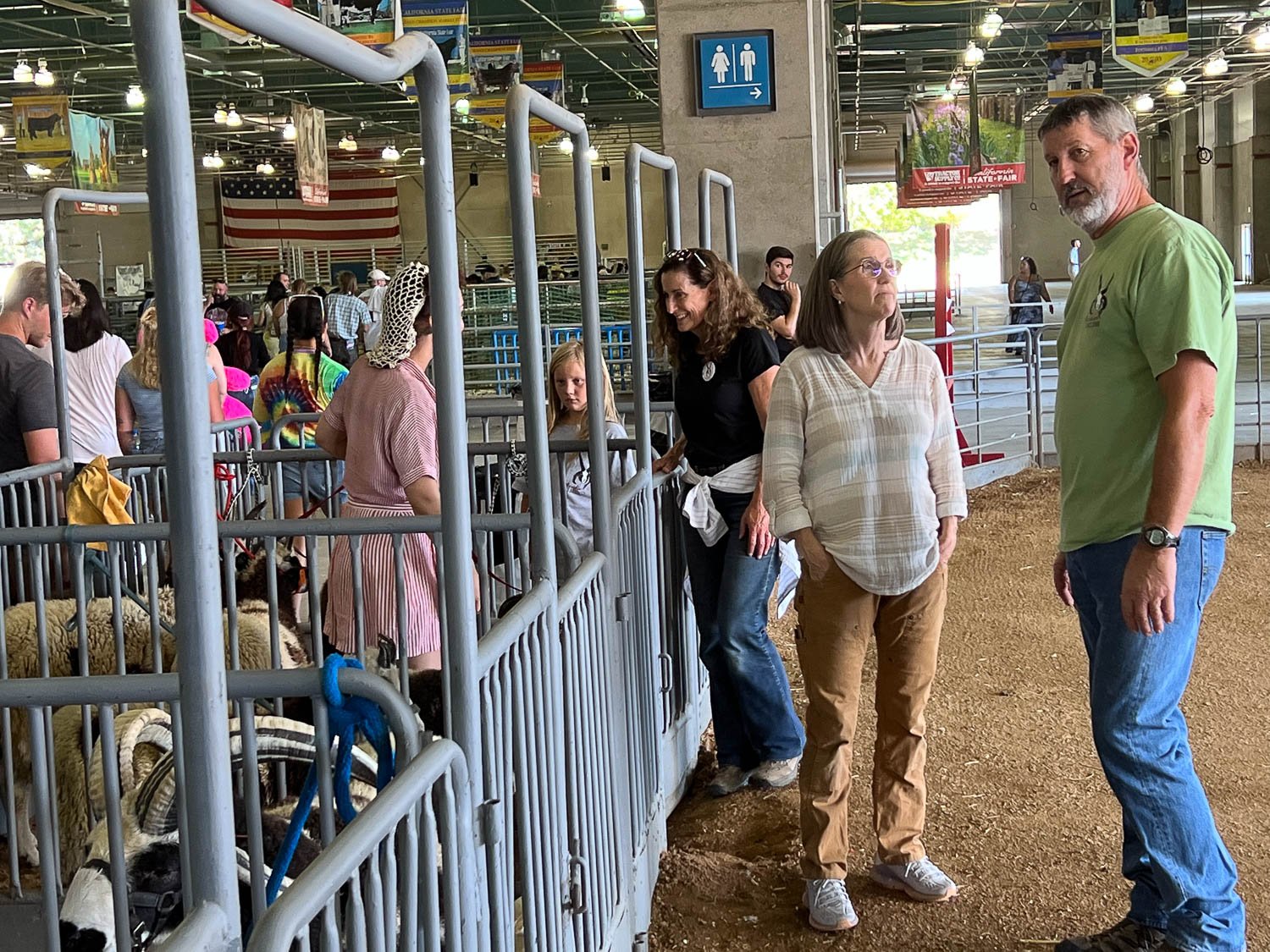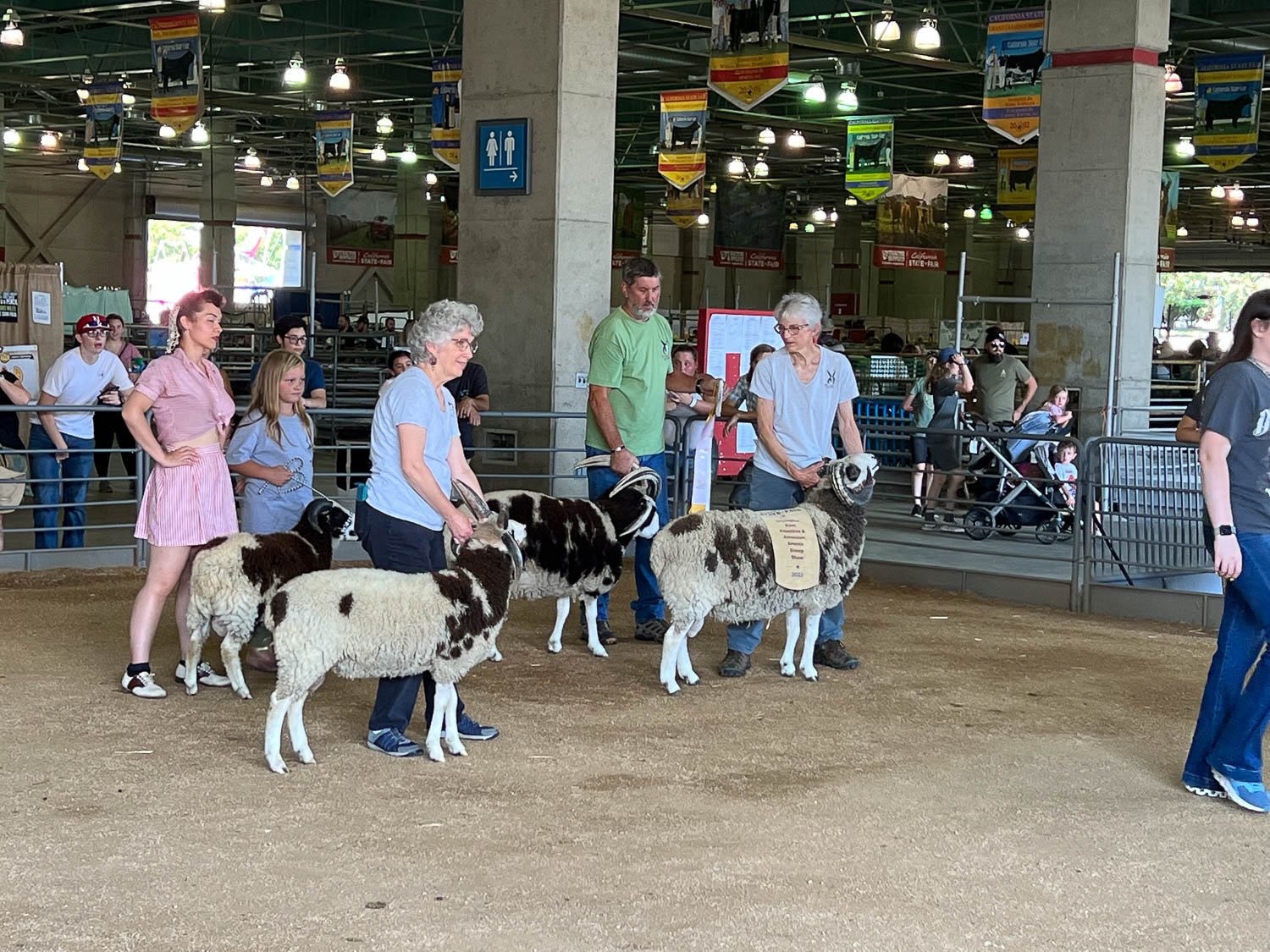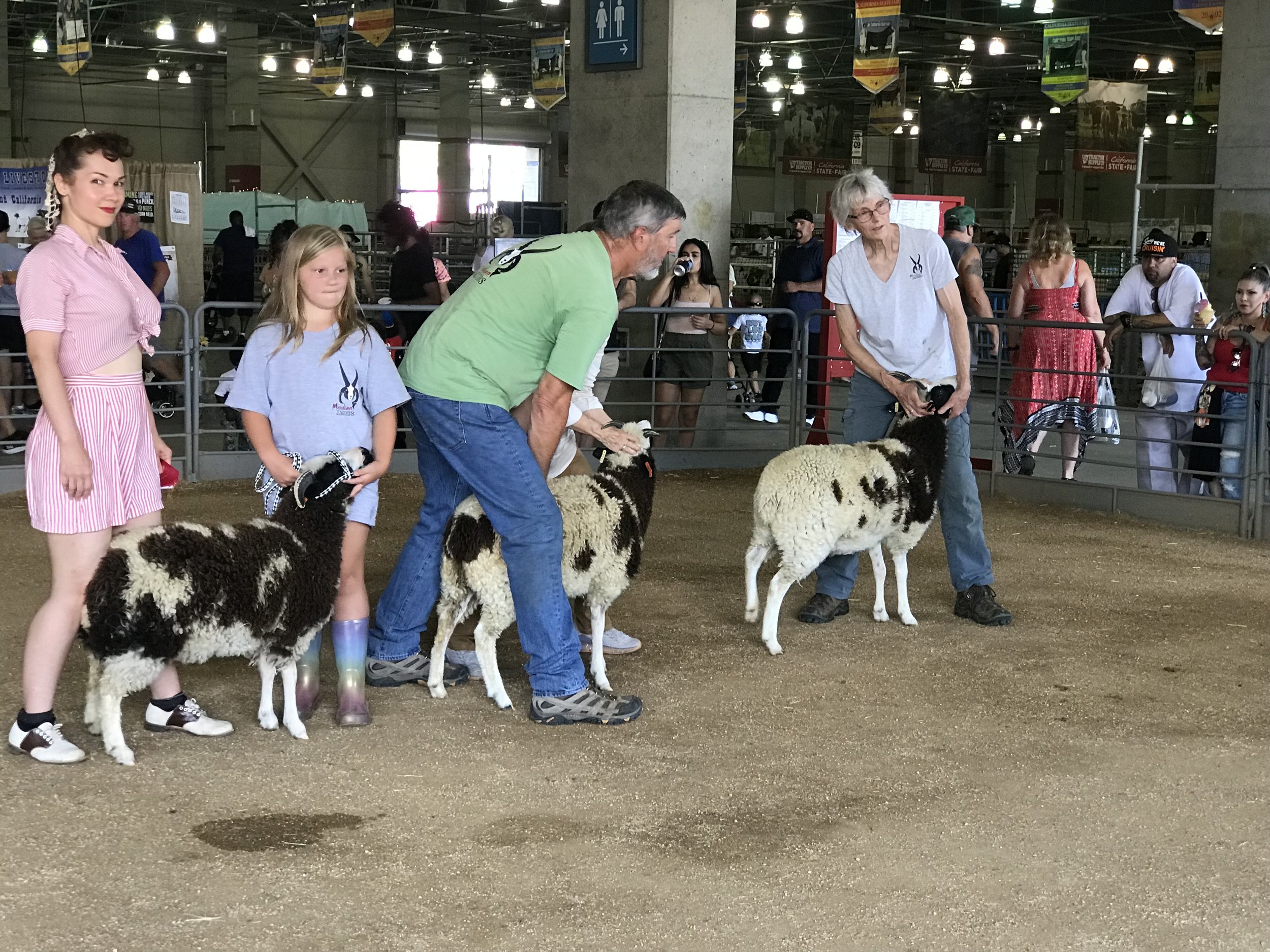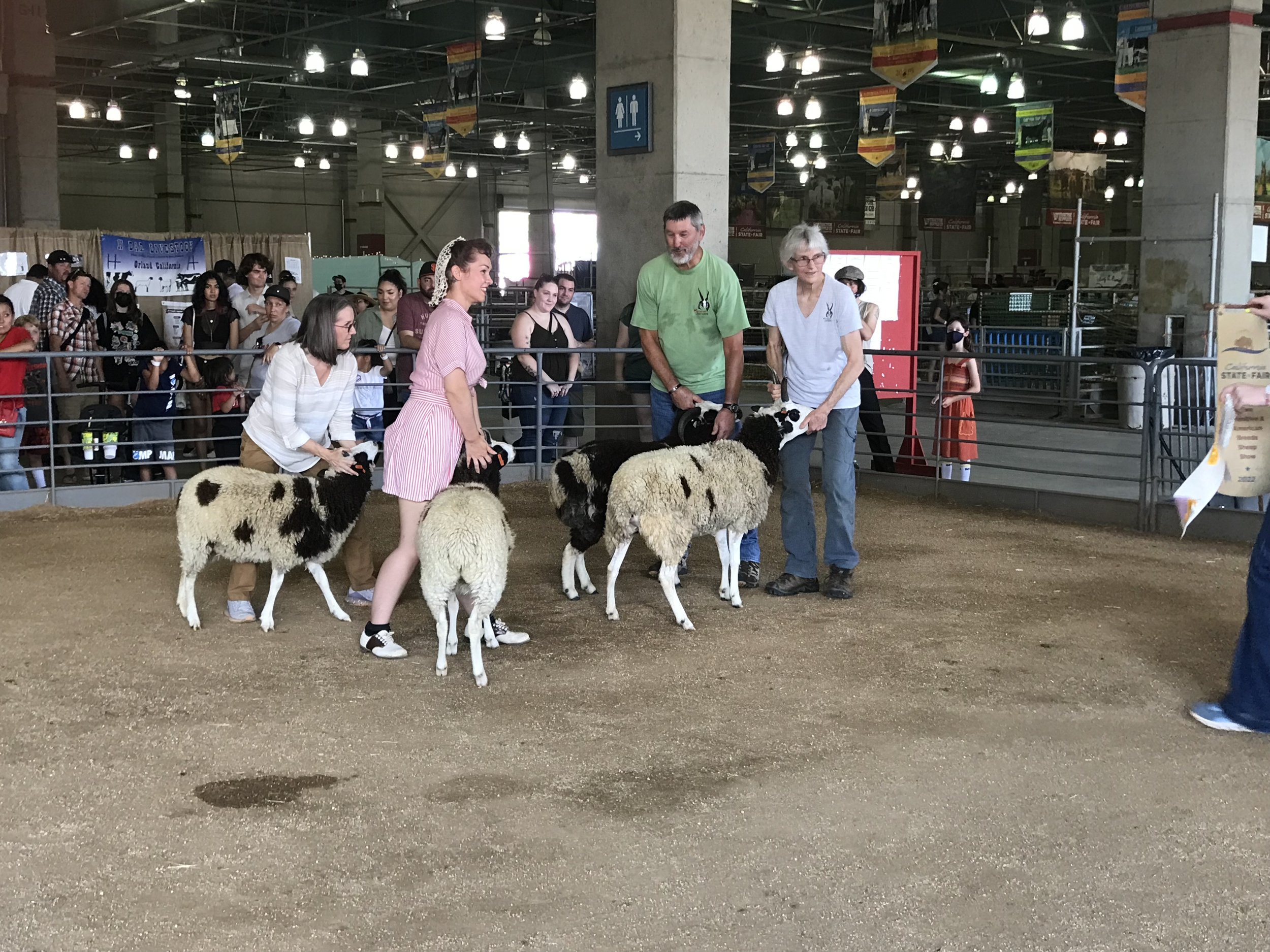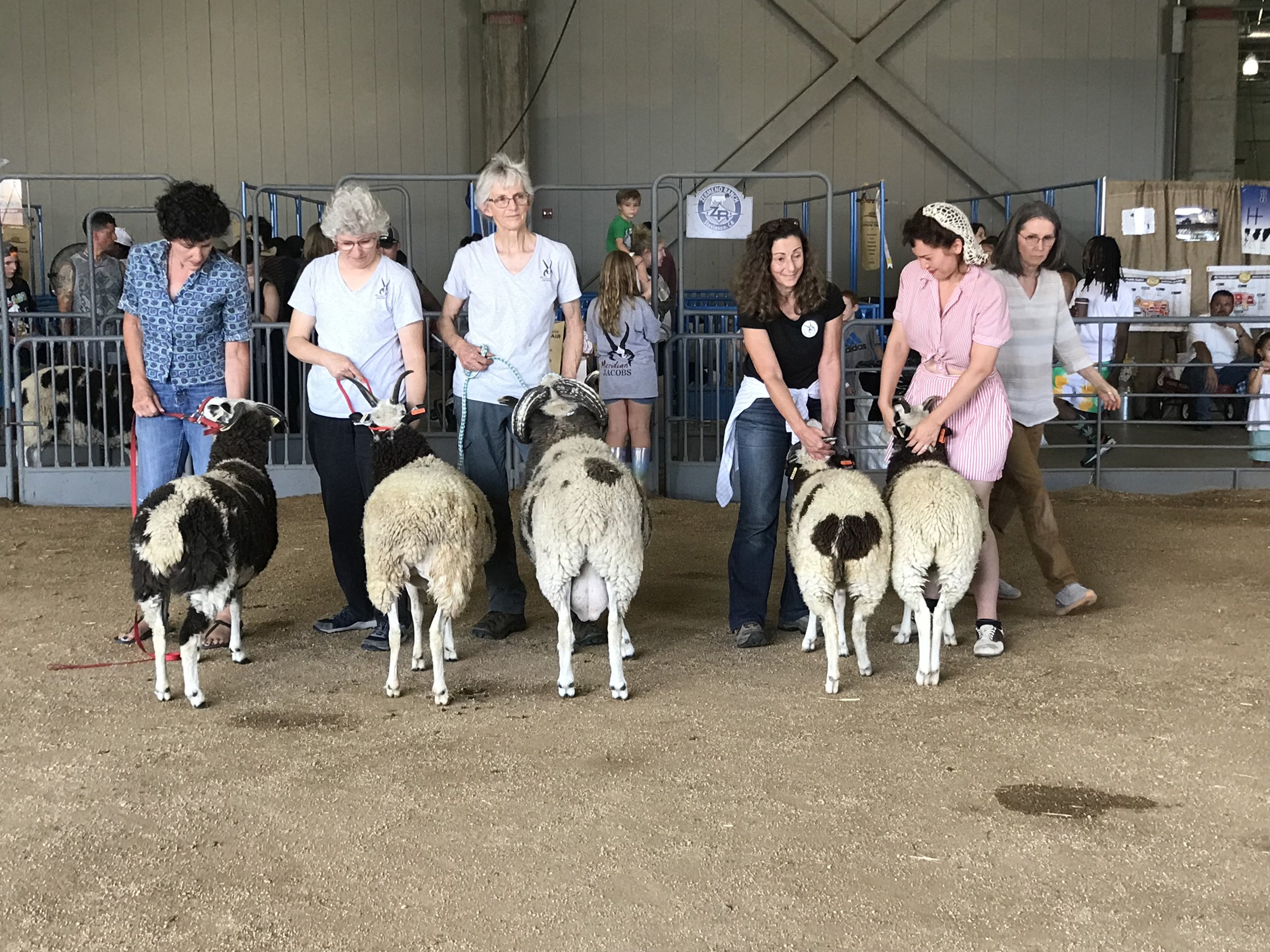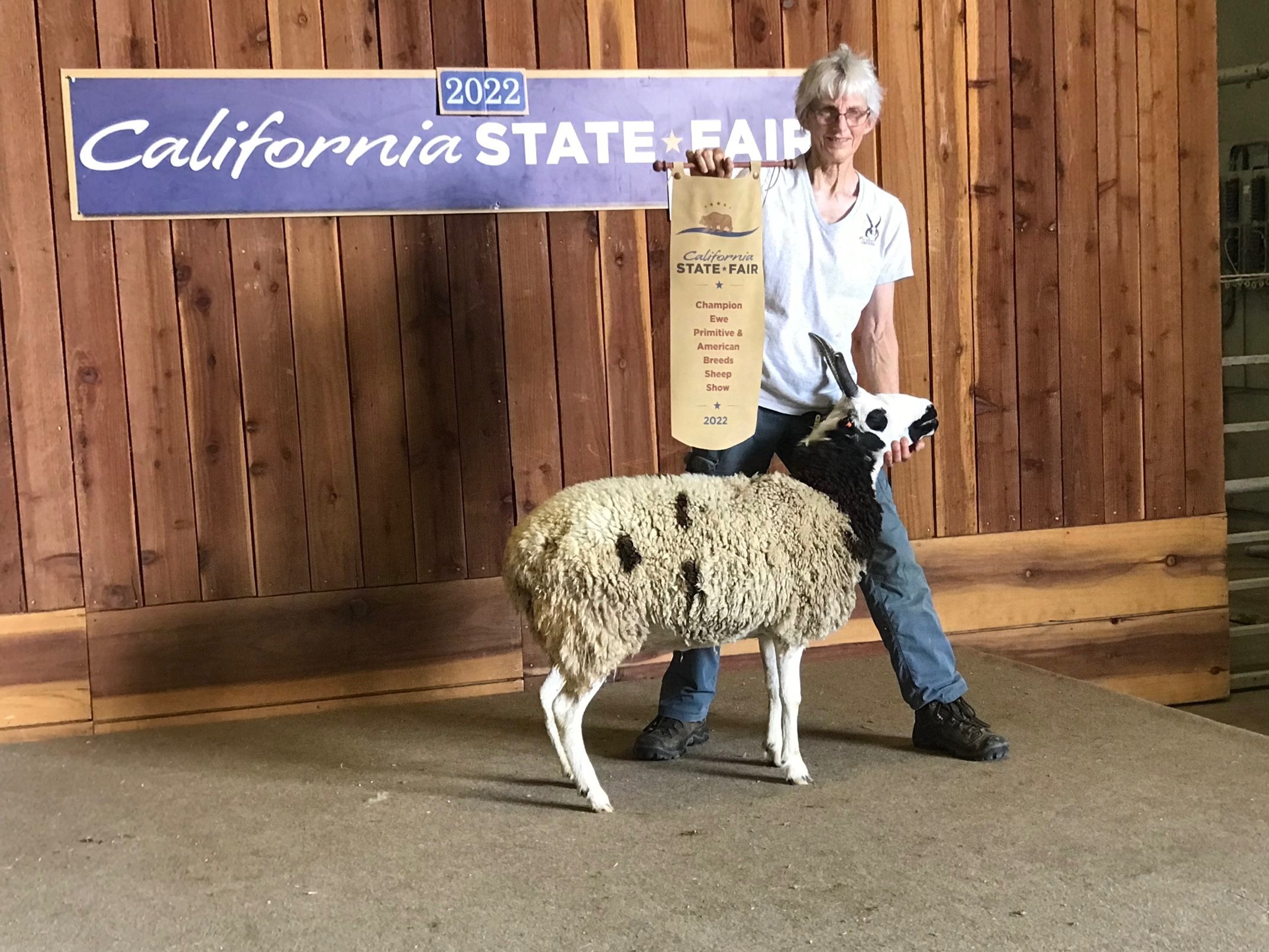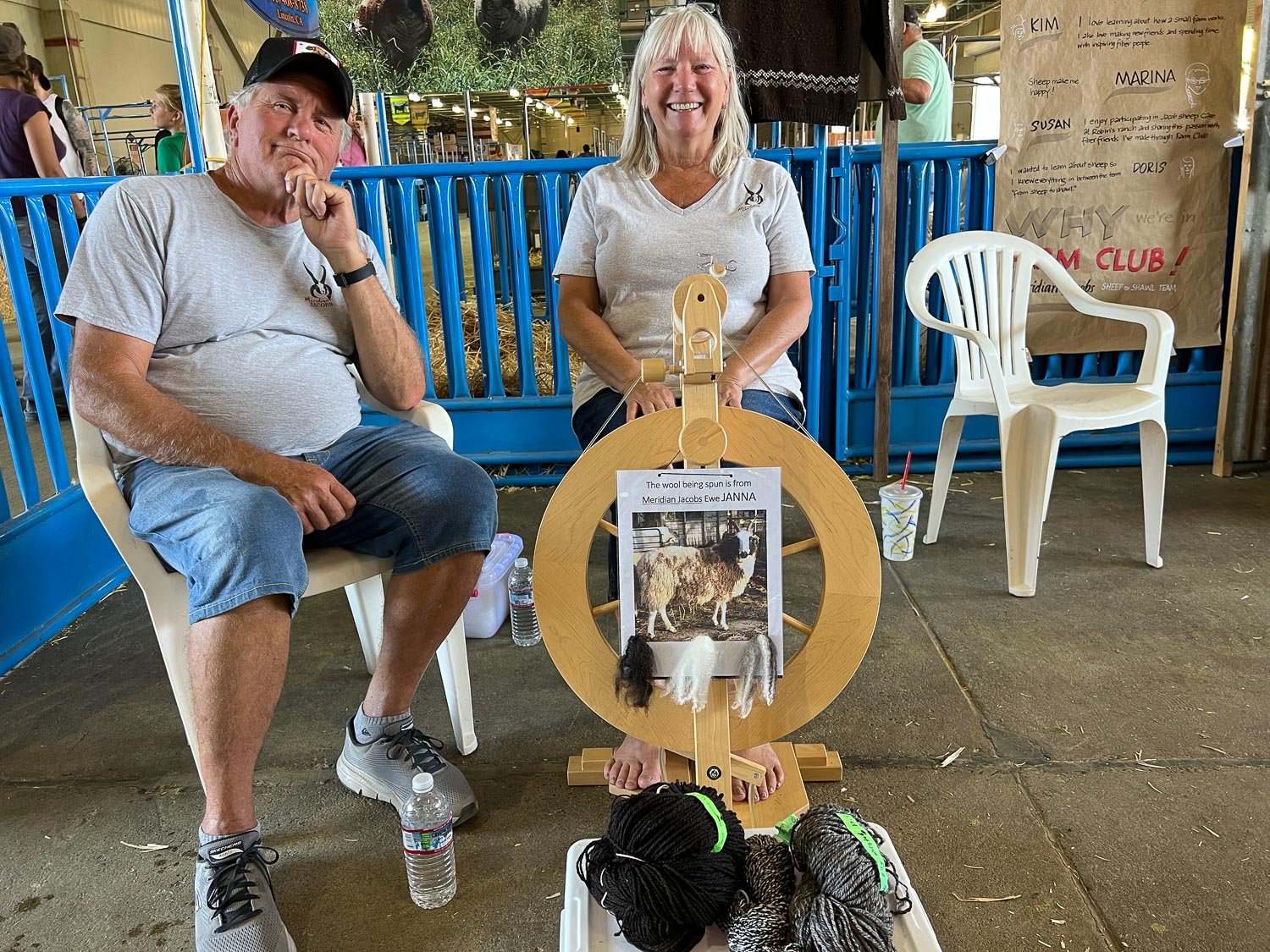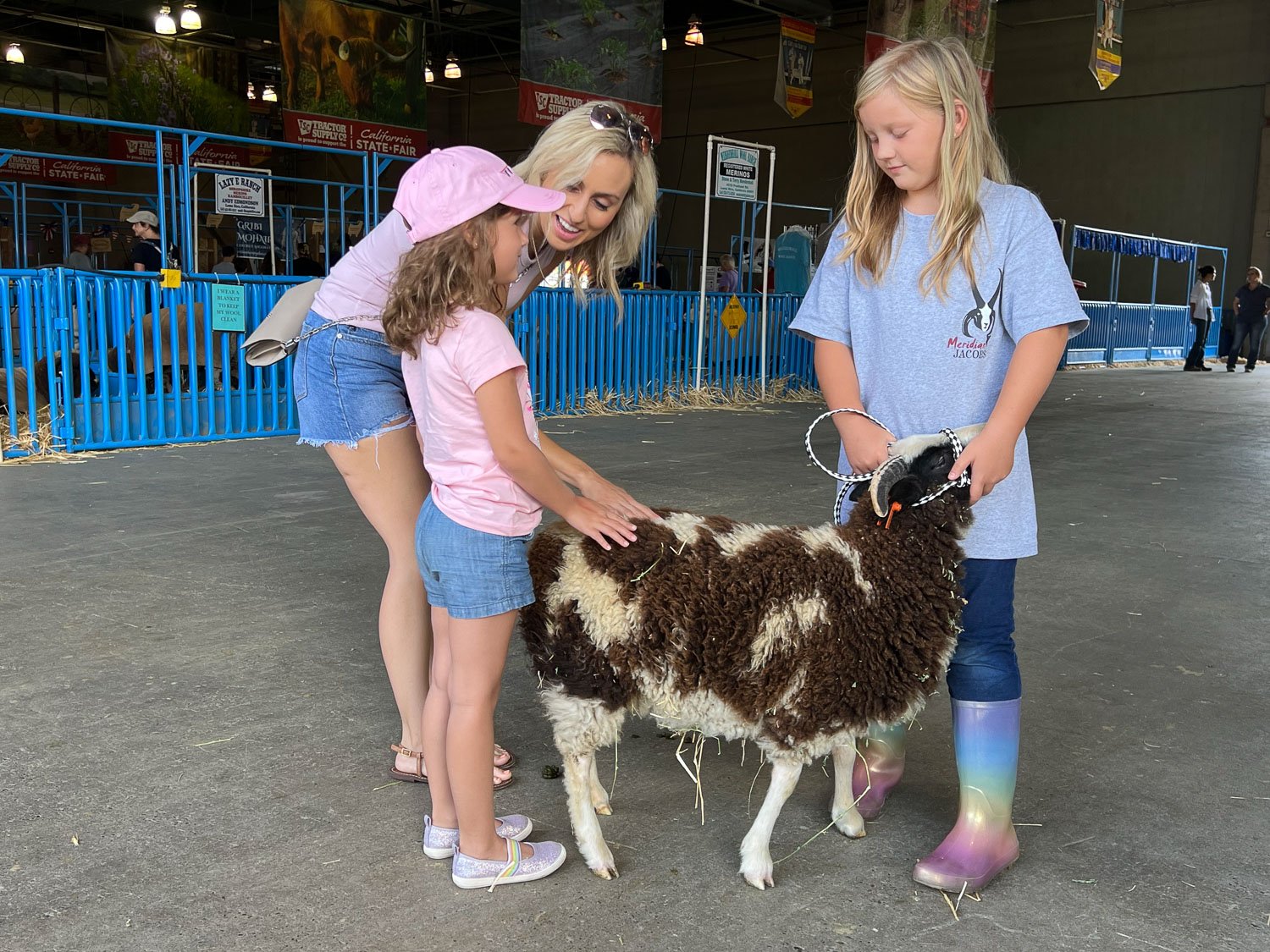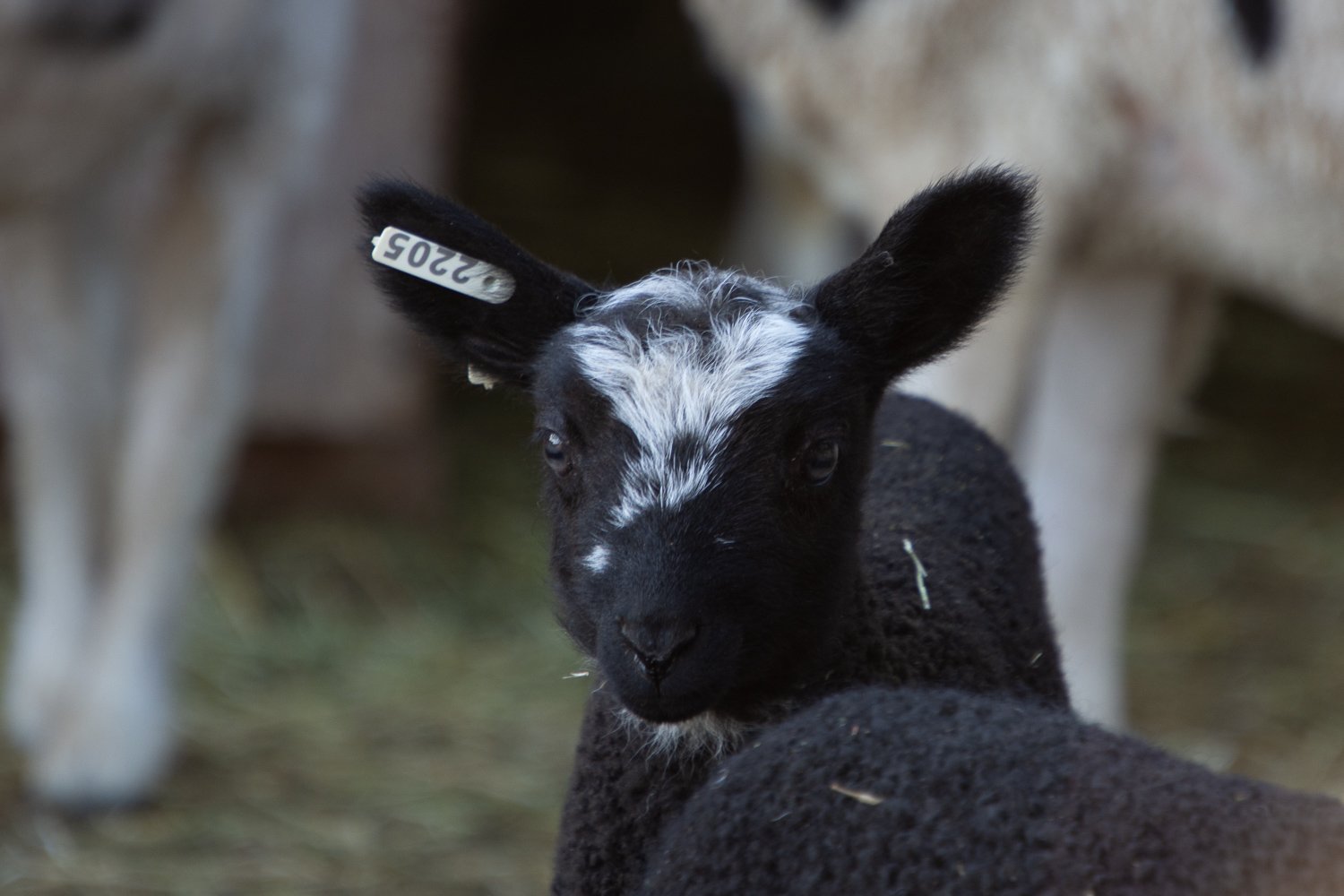CA State Fair - Day 3 - Show Day
/A lot has happened since I wrote the first post about State Fair, but I want to finish up with this before I share the next adventure.
Saturday was show day. We don’t do the kind of fitting that is necessary to show the other breeds of sheep. Jacob sheep are usually shown “natural”. I took all the sheep to the wash stall to at least clean their feet and legs and noses. I also scrubbed the horns. Silverado’s horns are very impressive when cleaned up.
Our show followed two other breed shows on Saturday afternoon. Unfortunately we were the only breeders for the Primitive Breeds Show this year. We counted as two because my granddaughter, Kirby, is now an owner with the sheep she bred (dam owned by her at the time of breeding). Her flock name is KJ Royalty, fitting with her theme of naming so far—Disney princesses.
We brought all the sheep to the show ring and waited for the judge to be ready. Farm Club members were there to help. Thanks to Gaby and Deborah for taking photos during the show. It would not be good show etiquette for me to be pulling out my phone while showing.
The first class was Yearling Rams. I have Meridian Axis and Dan showed Meridian Silverado.
Next was Ram Lambs. Kirby is showing KJ Royalty Thorn (brother of Rose, of the princess theme). Siobhan helped Kirby when she showed her sheep. Reba has Meridian Rascal and I have M. Ricochet.
In the Champion Drive the judge usually wants to see first and second place in each class side by side and in order by age.
In this case, the first place yearling ram, Axis, was awarded Champion and the other yearling was Reserve.
After the rams it’s time for the ewes, starting with yearling ewes. Kirby had practiced with the lambs and with her yearling, Beauty, but Beauty was headstrong and a bit of a challenge.
This is the ewe lamb class with Meridian Queen, M. Jannie, and KJ Royalty Rose.
Kirby had helped with the lambs almost every day that she was here. She is a natural at handling sheep.
In the class for Champion Ewe the yearlings were M. Quinci and KJ Royalty Beauty with lambs, M. Queen and M. Jannie. The yearlings were awarded Champion and Reserve Champion.
Group classes follow. This is Get of Sire—4 sheep, all with the same sire. These were all sired by Rambler.
This group class is Flock, consisting of one ram and four ewes of any age.
Champion Primitive Breed Ram, Meridian Axis.
Champion Primitive Breed Ewe, Meridian Quinci.
Here is some of the Farm Club crew that helped. Others were at the fair on the other days. Thanks to all of you!
We were also awarded banners for Premier Exhibitor and Premier Breeder in the Primitive Breeds division. I already told you up front that we were the only exhibitors, but we put in enough work that we earned the recognition anyway.
This is what show day will do to you!


